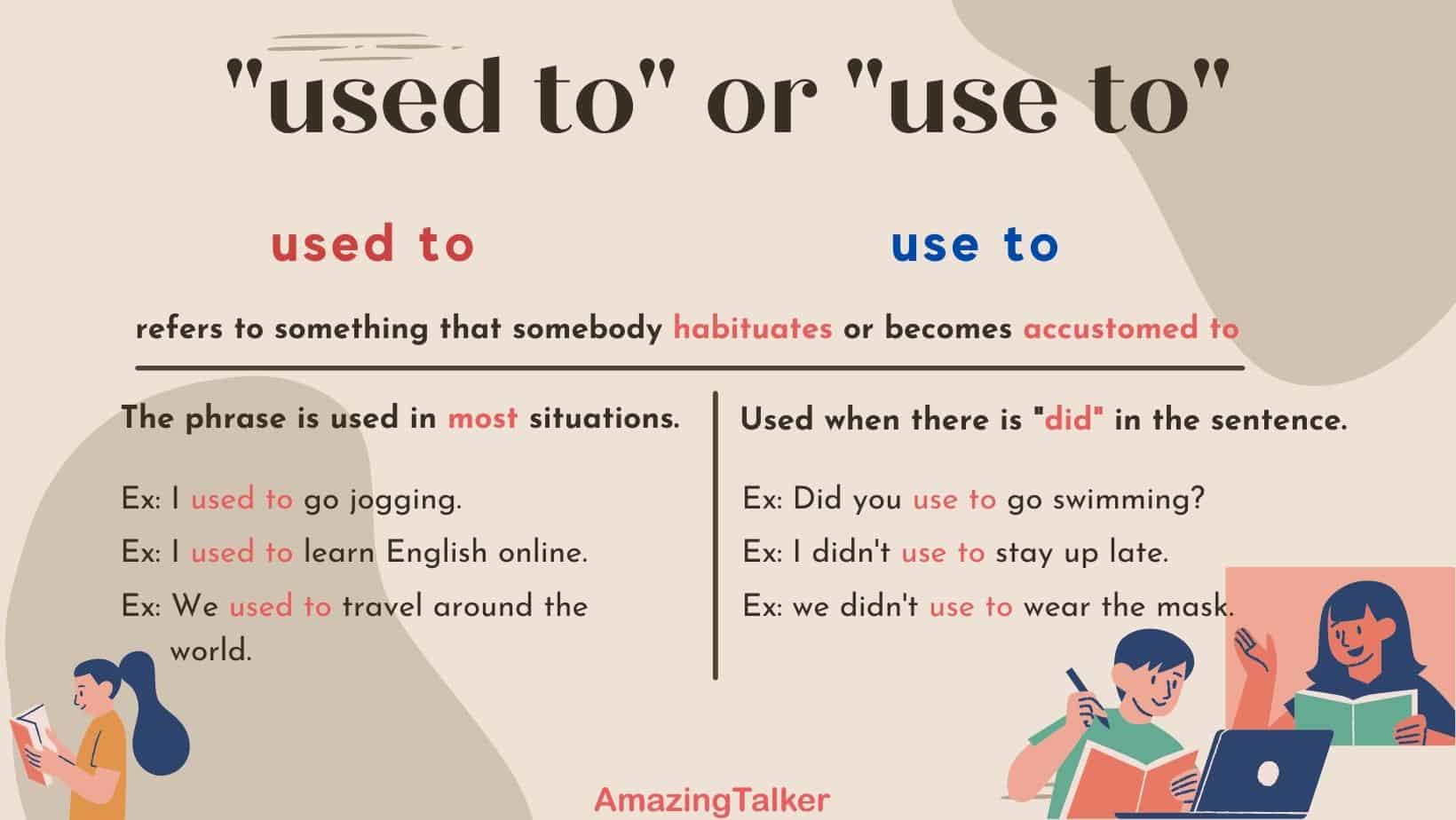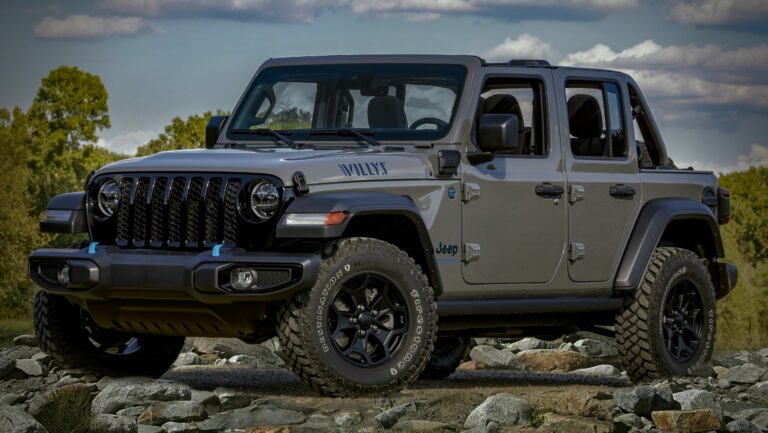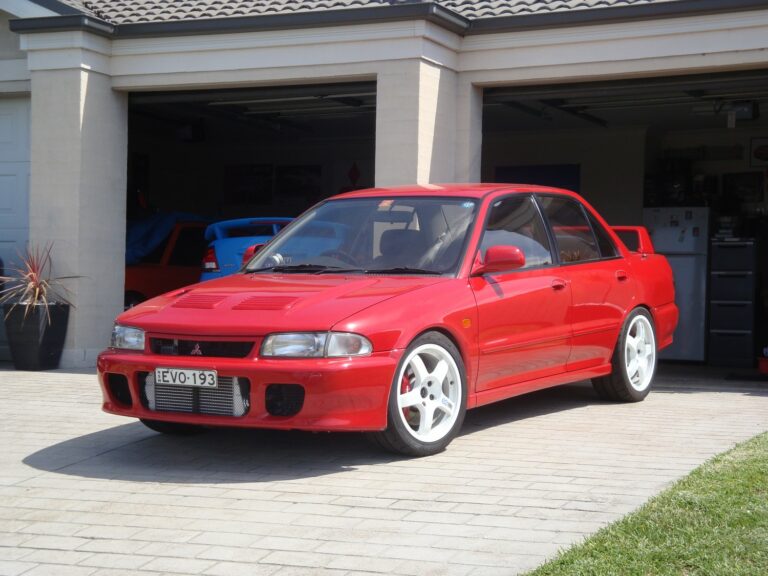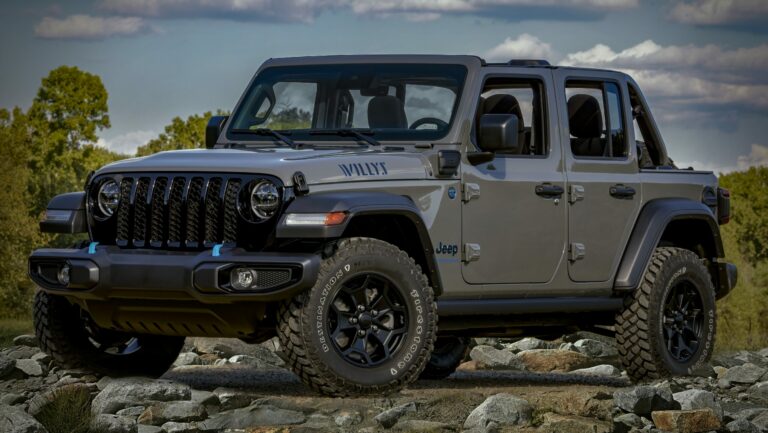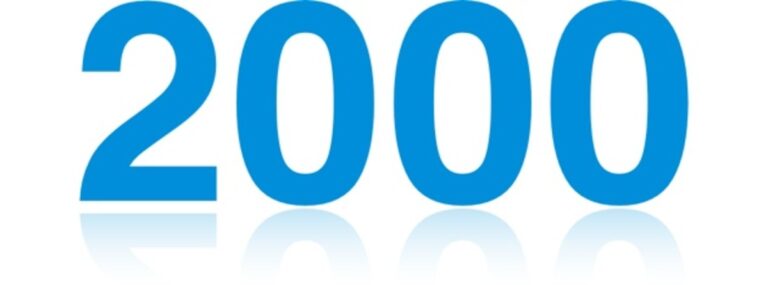Used Dana 44 Jeep Axles For Sale: Your Ultimate Guide to a Legendary Upgrade
Used Dana 44 Jeep Axles For Sale: Your Ultimate Guide to a Legendary Upgrade jeeps.truckstrend.com
For any serious Jeep enthusiast, the pursuit of enhanced off-road capability often leads to one critical component: the axle. While stock axles like the Dana 30 and Dana 35 serve admirably for light trail duty, the call of more aggressive terrain, larger tires, and greater articulation inevitably points towards a more robust solution. Enter the Dana 44 Jeep Axle. Renowned for its superior strength, reliability, and vast aftermarket support, the Dana 44 is often the gold standard for those looking to upgrade their Jeep’s drivetrain. This comprehensive guide will delve into everything you need to know about finding, evaluating, and purchasing used Dana 44 Jeep axles for sale, transforming your rig into an off-road beast.
Why Choose a Used Dana 44 for Your Jeep?
Used Dana 44 Jeep Axles For Sale: Your Ultimate Guide to a Legendary Upgrade
The Dana 44 has earned its legendary status in the off-road community for compelling reasons. It represents a significant upgrade over the lighter Dana 30 (front) and Dana 35 (rear) axles commonly found in many stock Jeeps. Here’s why it’s a preferred choice:
- Superior Strength: With a larger ring and pinion gear, stronger housing, and often larger axle shafts (30-spline as standard, compared to 27-spline in Dana 30/35), the Dana 44 can handle more abuse from larger tires, aggressive driving, and heavy loads. This translates to fewer broken components on the trail.
- Reliability: Its robust design has been proven over decades in various vehicles, ensuring a long service life even under demanding conditions.
- Vast Aftermarket Support: The Dana 44 is one of the most widely supported axles in the aftermarket. From lockers and limited-slip differentials to stronger chromoly shafts, heavy-duty covers, and custom bracketry, virtually any upgrade you can imagine is available.
- Cost-Effectiveness: While buying a new aftermarket axle can cost thousands, a used Dana 44 offers a significantly more affordable path to a substantial strength upgrade. This allows budget-conscious builders to allocate funds to other essential modifications.
- Increased Tire Capacity: For those planning to run 35-inch tires or larger, a Dana 44 becomes almost a necessity to prevent constant axle shaft or differential failures.

Identifying a Dana 44 Axle
Before you can buy one, you need to know how to identify one. While some Jeeps came with Dana 44s from the factory, others did not. Distinguishing a Dana 44 from a Dana 30 or Dana 35 is crucial.
- Differential Cover Shape: This is the easiest visual cue.
- Dana 30/44: Both have a distinctive, somewhat oval-shaped cover with a flat bottom. However, the Dana 44 cover is noticeably larger.
- Dana 35: Has a more rounded, almost egg-shaped cover with a slightly raised lip around the perimeter. It’s also smaller than the Dana 44.
- Ring Gear Size: The Dana 44 boasts an 8.5-inch ring gear, significantly larger than the Dana 30’s 7.25-inch and the Dana 35’s 7.56-inch. This difference is visible if you compare the axle housing size.
- Tube Diameter: Dana 44 axle tubes are typically larger in diameter than Dana 30/35 tubes, though this can vary slightly by application.
- BOM (Bill of Material) Tag: Most Dana axles have a small metal tag attached to one of the differential cover bolts. This tag contains a BOM number (e.g., 610000-1). You can cross-reference this number online with Spicer/Dana resources to definitively identify the axle model, gear ratio, and original application. This is the most reliable method for identification.
Common Jeep Models with Factory Dana 44 Axles
Understanding which Jeeps came equipped with Dana 44s can narrow your search:
- Jeep TJ Wrangler Rubicon (2003-2006): These are highly sought after as they came with factory Dana 44 axles front and rear, equipped with air-actuated lockers (Tru-Loks) and 4.10 gears. The rear is a high-pinion Dana 44, while the front is a low-pinion.
- Jeep JK Wrangler Rubicon (2007-2018): Like the TJ Rubicon, these also feature front and rear Dana 44s with electronic lockers (e-lockers) and specific gear ratios (typically 3.73 or 4.10, with some 4.56). The front JK Dana 44 is a low-pinion design, while the rear is a high-pinion.
- Jeep CJ Series (various years): Some CJ models, particularly those with V8 engines or the "wide track" package, came with rear Dana 44s.
- Jeep YJ Wrangler (1987-1995): A limited number of YJs, typically those with the 4.0L engine and certain towing packages, had a rear Dana 44.
- Jeep Cherokee XJ / Comanche MJ (1984-2001): A very small percentage of XJs and MJs came with a rear Dana 44, usually found in models with the "Tow Package" or manual transmission. These are rare and highly prized.
- Jeep JT Gladiator (2020+): All Gladiators come with Dana 44s front and rear, with Rubicon models featuring wider axles and electronic lockers.
Key Considerations When Buying a Used Dana 44
Purchasing a used axle requires careful consideration to ensure you’re getting a good deal and the right component for your specific needs.
- Condition of the Housing:
- Rust: Surface rust is common and usually not an issue, but deep, pitting rust can compromise strength.
- Bends/Damage: Inspect the axle tubes for bends, particularly if the vehicle was involved in an accident or heavily wheeled. Use a straight edge or string line to check for straightness.
- Cracks: Look for cracks around the differential housing, weld points, and mounting brackets.
- Diff Cover: Check for impact damage to the differential cover itself.
- Gear Ratio:
- Matching Front/Rear: If you’re upgrading both axles, ensure they have the same gear ratio. If only upgrading one, you’ll need to re-gear the other axle to match, which is a significant additional cost.
- Intended Use: Choose a gear ratio appropriate for your tire size and driving style (e.g., lower gears for larger tires and off-roading).
- Locker/Limited Slip:
- Factory Lockers: TJ/JK Rubicon axles come with factory lockers (air or electronic). Verify they are functional and test them if possible.
- Aftermarket Lockers: Some used axles may have aftermarket lockers or limited-slip differentials installed. Identify the type and research its reliability.
- Open Differential: Many used Dana 44s will be open differentials. This provides a clean slate for your preferred traction device.
- Axle Shafts:
- Spline Count: Most Dana 44s come with 30-spline shafts. Verify this. Some older or less common applications might have 19 or 33 splines.
- Condition: Inspect shafts for straightness, twist, or damage to splines. Upgraded chromoly shafts are a bonus but often indicate a harder life.
- Brakes:
- Disc vs. Drum: Most modern Dana 44s are disc brake equipped. Older ones might be drum. Consider your preference and the compatibility with your existing brake system.
- Condition: Check rotors, calipers, and pads for wear. Assume they’ll need replacement.
- Bolt Pattern:
- Critical for Wheels: Ensure the axle’s bolt pattern matches your wheels or that you plan to change them. Common Jeep patterns are 5×4.5 (TJ/YJ/XJ/MJ), 5×5 (JK/JL/JT), and sometimes 6×5.5 (older trucks, full-width conversions).
- Width (WMS-to-WMS):
- Wheel Mounting Surface: Measure the width from wheel mounting surface to wheel mounting surface (WMS). Different Jeep models have different widths. For example, a TJ Rubicon Dana 44 is typically 61 inches wide, while a JK Rubicon front is around 65.5 inches, and the rear 63.5 inches. Ensure the width is suitable for your vehicle and desired stance.
- Steering and Suspension Brackets:
- Compatibility: If buying a complete axle, check if the steering knuckles, ball joints, and suspension brackets (control arm mounts, coil spring perches, shock mounts) are intact and in good condition.
- Swapping: Be aware that you’ll likely need to cut off and weld on new brackets to adapt an axle from one Jeep model to another (e.g., a JK Dana 44 into a TJ). This adds significant cost and complexity.
- Price vs. Value:
- What’s Included: A bare housing will be much cheaper than a complete axle with gears, locker, shafts, and brakes. Factor in the cost of components you’ll need to add.
- Rebuilding Costs: Assume you’ll need to replace seals, bearings, and possibly ball joints. Factor in the cost of a master rebuild kit and labor if you’re not doing it yourself.
- Shipping: Axles are heavy and expensive to ship. Factor this into your budget if buying from a distance.
Where to Find Used Dana 44 Axles
The search for a used Dana 44 can be an adventure in itself.
- Online Forums & Classifieds: Jeep-specific forums (e.g., Pirate4x4, JeepForum, JLWranglerForums), Facebook Marketplace, Craigslist, and eBay are excellent sources. Be wary of scams and always try to inspect in person.
- Local Junkyards/Salvage Yards: A diamond in the rough can sometimes be found here, but identification and inspection can be challenging.
- Specialized Off-Road Shops: Many shops that perform axle swaps or custom builds will have used axles available, often already cleaned up or partially rebuilt. Prices might be higher, but the quality and support could be better.
- Word of Mouth: Network with other Jeepers in your local community. Someone might be upgrading and selling their old axles.
The Inspection Process: What to Look For
Once you’ve located a potential axle, a thorough inspection is paramount.
- Visual Walk-Around: Check for obvious damage, heavy rust, or signs of impact. Look at the differential cover for dents or gouges.
- Axle Tubes: Use a long straight edge or a string stretched tightly from end to end to check for bent tubes.
- Pinion Yoke: Check for excessive play or slop. Try to spin it by hand; it should turn smoothly without grinding or binding.
- Axle Shafts (if present): Pull the shafts out slightly if possible to check for twisted splines (a sign of abuse).
- Ball Joints (front axle): Grab the top and bottom of the knuckles and try to wiggle them. Any significant play indicates worn ball joints.
- Brake Components: Inspect rotors for deep grooves, calipers for seized pistons, and pads for wear.
- Fluid Check: If possible, check the differential fluid. Milky fluid indicates water contamination, which is a major red flag for bearing and gear damage. Burnt-smelling fluid indicates excessive heat and potential gear wear.
Installation and Post-Purchase Considerations
- DIY vs. Professional: Swapping axles is a significant undertaking. If you lack the tools, space, or mechanical expertise, professional installation is highly recommended.
- Braking System: Ensure your master cylinder and brake lines are compatible with the new axle’s brake type (disc/drum). You may need new brake lines or a proportioning valve.
- Driveshafts: The new axle might require different length or style driveshafts, especially if it’s a different width or pinion angle.
- Suspension Geometry: Swapping axles often necessitates new control arms, track bars, coil spring perches, and shock mounts to correct suspension geometry for optimal performance and safety.
- Fluid & Break-in: Always fill the differential with fresh, high-quality gear oil. If the gears are new or have been re-geared, follow a proper break-in procedure to prevent premature wear.
Potential Challenges and Solutions
- Unexpected Damage: Even after inspection, you might find hidden issues. Solution: Factor in a budget for rebuild parts (bearings, seals) and unexpected repairs.
- Re-gearing Costs: If the axle’s gear ratio doesn’t match your needs or existing axle, re-gearing can be expensive (hundreds to over a thousand dollars per axle). Solution: Try to find an axle with the desired ratio or factor re-gearing into your total budget.
- Shipping Logistics: Axles are large and heavy. Shipping can be prohibitive. Solution: Prioritize local pickup or find a seller willing to meet halfway.
- Compatibility Issues: Not all Dana 44s are created equal. A JK Dana 44 won’t directly bolt into a TJ without extensive fabrication. Solution: Research thoroughly and understand the modifications required for your specific swap.
Estimated Price Table for Used Dana 44 Jeep Axles For Sale
Prices for used Dana 44 axles vary wildly based on condition, included components, location, and demand. This table provides estimated ranges to help you budget.
| Axle Type & Model | Key Features | Estimated Price Range (USD) | Notes & Considerations |
|---|---|---|---|
| TJ Rubicon Dana 44 Rear | High-pinion, 30-spline, Air Locker, 4.10 gears | $1,000 – $2,000 | Highly sought after. Often includes disc brakes. |
| TJ Rubicon Dana 44 Front | Low-pinion, 30-spline, Air Locker, 4.10 gears | $1,200 – $2,500 | Rare to find alone. Ball joints often need replacing. |
| JK Rubicon Dana 44 Rear | High-pinion, 32-spline, E-Locker, 3.73/4.10 gears | $800 – $1,800 | Wider than TJ axles. Requires e-locker wiring. |
| JK Rubicon Dana 44 Front | Low-pinion, 30-spline, E-Locker, 3.73/4.10 gears | $1,000 – $2,200 | Wider than TJ axles. Ball joints common wear item. |
| XJ/YJ/CJ Dana 44 Rear | Low-pinion, 30-spline, Open Diff, various gears | $400 – $900 | Rare find. Often drum brakes. Good for budget builds. |
| Dana 44 Bare Housing (Front/Rear) | No internals (gears, shafts, diff), no brakes | $200 – $500 | Requires full build. Good if you want specific components. |
| Complete Dana 44 (Non-Rubicon) | Open Diff, stock gears, shafts, brakes | $600 – $1,200 | Condition varies wildly. Assume it needs a rebuild. |
| Aftermarket Dana 44 (Used) | High-strength, often with lockers/gears | $2,000 – $4,000+ | From brands like Currie, Dynatrac. High value, but still used. |
Note: These prices are estimates and can fluctuate significantly based on location, seller, included components (e.g., condition of brakes, presence of upgraded shafts), and overall market demand.
Frequently Asked Questions (FAQ) about Used Dana 44 Jeep Axles
Q1: Is a Dana 44 strong enough for 37-inch tires?
A1: A stock Dana 44 with 37-inch tires is pushing its limits, especially on the front axle and with aggressive off-roading. For reliability with 37s, it’s highly recommended to upgrade to chromoly axle shafts, a strong differential cover, and potentially heavier-duty ball joints or C-gussets. For very heavy abuse, a Dana 60 might be considered.
Q2: What’s the difference between a TJ Rubicon Dana 44 and a JK Rubicon Dana 44?
A2: Significant differences include:
- Width: JK axles are considerably wider (front ~65.5", rear ~63.5") compared to TJ axles (front ~60.5", rear ~61").
- Locker Type: TJ Rubicons have air-actuated Tru-Loks; JK Rubicons have electronic e-lockers.
- Bolt Pattern: TJ axles are 5×4.5"; JK axles are 5×5".
- Suspension Brackets: Brackets are in different locations and angles, making direct swaps between TJ and JK chassis difficult without fabrication.
Q3: Can I put a Dana 44 in my Jeep that originally had a Dana 35?
A3: Yes, absolutely! This is one of the most common and beneficial upgrades. However, it’s rarely a direct bolt-in. You’ll likely need to cut off the old suspension brackets and weld on new ones specific to your Jeep model, or purchase an axle already configured for your application. Driveshaft length and brake line compatibility may also be issues.
Q4: How much does it cost to re-gear a Dana 44?
A4: Re-gearing costs vary widely but typically range from $400-$800 per axle for parts (ring & pinion, master install kit) if you do it yourself, or $800-$1500+ per axle if professionally installed. This cost needs to be factored in if the used axle’s gear ratio doesn’t match your existing setup or desired performance.
Q5: Should I buy a bare housing or a complete axle?
A5:
- Bare Housing: Cheaper upfront, ideal if you want to build the axle exactly how you want it (e.g., specific locker, gear ratio, upgraded shafts). Requires significant additional cost for components and assembly.
- Complete Axle: More expensive initially, but saves time and effort on assembly. Inspect thoroughly for wear on components. Often the best value if the gear ratio and locker type are what you need.
Q6: What’s a BOM number?
A6: BOM stands for Bill of Material. It’s a unique identification number (e.g., 610000-1) stamped on a metal tag attached to one of the differential cover bolts on Dana axles. You can use this number on the Dana Spicer website or other online resources to identify the exact axle model, original vehicle application, gear ratio, and other specifications, making it invaluable for verifying what you’re buying.
Conclusion
Investing in a used Dana 44 Jeep axle is one of the most impactful upgrades you can make to your off-road vehicle. It provides a significant leap in strength and reliability, opening up new possibilities for challenging trails and larger tires. While the search and installation process can be complex, understanding the different types, knowing what to look for during inspection, and budgeting appropriately for potential rebuilds or modifications will ensure a successful and rewarding upgrade. With the right Dana 44, your Jeep will be ready to tackle almost anything you throw at it, making every adventure more confident and enjoyable.
